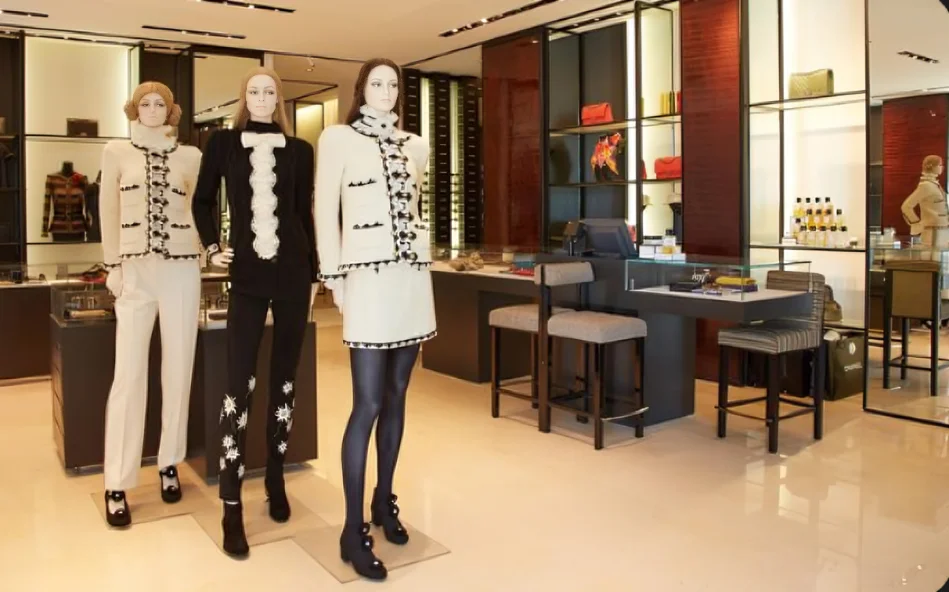When it comes to fashion, the debate of luxury vs fast fashion brands has become one of the most discussed topics among style enthusiasts and conscious consumers. Luxury brands emphasize exclusivity, heritage, and superior craftsmanship, while fast fashion focuses on affordability, accessibility, and speed. As the fashion industry evolves, understanding these two categories is crucial to making informed buying decisions.
In this article, we will compare luxury and fast fashion brands from multiple angles, including quality, sustainability, price, consumer appeal, and long-term value. By the end, you’ll have a clear perspective on how these two approaches to fashion shape global style trends and consumer behavior.
The Essence of Luxury Fashion Brands

Luxury brands represent more than clothing they symbolize prestige, tradition, and timeless appeal. Labels like Gucci, Chanel, and Louis Vuitton stand as cultural icons, known for their meticulous attention to detail and craftsmanship.
Unlike mass production, luxury fashion emphasizes exclusivity. Every piece is designed with longevity in mind, which means consumers often view luxury purchases as investments rather than quick buys. Moreover, the brand story and heritage play a key role in building emotional connections with customers.
The Rise of Fast Fashion Brands
In contrast, fast fashion brands such as Zara, H&M, and Shein thrive on speed and accessibility. Their business model is centered on delivering runway-inspired designs at low costs, often within weeks. This enables consumers to stay trendy without overspending.
However, while fast fashion democratizes style, it comes with trade-offs. Lower quality fabrics and rapid production cycles often result in garments with shorter lifespans. Still, for budget-conscious shoppers who enjoy constant wardrobe updates, fast fashion remains a popular choice.
Quality: Craftsmanship vs. Mass Production
A major difference between luxury and fast fashion lies in product quality.
-
Luxury brands invest in premium fabrics, skilled artisans, and timeless designs. Each piece undergoes rigorous quality checks to ensure durability and elegance.
-
Fast fashion brands, on the other hand, focus on producing large quantities at minimal costs. While the designs may look stylish initially, frequent wear often reveals lower durability.
This distinction makes luxury fashion ideal for long-term wardrobes, while fast fashion caters to those who prioritize variety over longevity.
Pricing: Investment vs. Affordability

Price is perhaps the most obvious contrast in the luxury vs fast fashion brands debate.
-
Luxury fashion items can cost hundreds or even thousands of dollars, making them attainable to only a select group of consumers.
-
Fast fashion, however, offers affordability at scale, allowing individuals from all economic backgrounds to participate in style trends.
While luxury pieces are often seen as investments with potential resale value, fast fashion rarely holds long-term worth.
Sustainability: Conscious Luxury vs. Environmental Concerns
Sustainability has become a defining issue in the modern fashion landscape.
-
Luxury brands increasingly adopt eco-friendly practices, such as sourcing sustainable materials and reducing waste. Their slower production cycles naturally support more sustainable consumption.
-
Fast fashion, by contrast, faces criticism for contributing to pollution, textile waste, and labor exploitation. The rapid cycle of new collections encourages overconsumption, leading to massive environmental challenges.
Consumers seeking eco-conscious choices are therefore more likely to align with luxury fashion values.
Consumer Appeal: Exclusivity vs. Accessibility
Another key difference lies in consumer perception:
-
Luxury brands appeal to those who value status, identity, and uniqueness. Owning a designer item often signals prestige and sophistication.
-
Fast fashion brands attract shoppers who desire affordability, variety, and convenience. For them, fashion is about experimentation and accessibility rather than legacy.
This duality explains why both segments thrive, catering to distinct consumer mindsets.
Transitioning Between Luxury and Fast Fashion
Interestingly, consumer behavior often shifts between both categories. For instance, young shoppers may start with fast fashion for affordability but aspire toward luxury as their income grows. Conversely, some luxury buyers may still turn to fast fashion for quick seasonal trends.
This blending of consumption highlights how the two segments, though different, complement each other in shaping modern fashion culture.
Digital Transformation and Marketing

In today’s world, both luxury and fast fashion brands rely heavily on digital platforms to connect with consumers. However, their approaches to digital transformation differ significantly.
Luxury Fashion in the Digital Era
Luxury fashion leverages storytelling, heritage, and influencer collaborations to enhance exclusivity. Their campaigns often feature high-end visuals, celebrity endorsements, and carefully curated experiences that align with the prestige of the brand. The goal is to maintain luxury’s aura while engaging the modern digital audience.
Fast Fashion’s Digital Strategy
Fast fashion dominates social media with aggressive marketing, micro-influencer partnerships, and viral content. Their emphasis is speed, trend replication, and relatability rather than prestige. By using platforms like TikTok and Instagram, fast fashion brands tap into real-time trends and consumer demands instantly.
Digital Transformation as a Global Equalizer
Digital transformation has, therefore, become a powerful equalizer. While luxury focuses on exclusivity and storytelling, and fast fashion prioritizes accessibility and speed, both models expand their global reach through innovative digital strategies.
FAQs
1. Why are luxury brands so expensive?
Luxury brands charge higher prices due to premium materials, expert craftsmanship, and brand heritage. The exclusivity and prestige associated with luxury fashion also contribute to its cost.
2. Are fast fashion brands unethical?
Not all fast fashion brands are unethical, but many face criticism for unsustainable practices, low wages, and environmental impact. Some are now working toward more eco-friendly initiatives.
3. Can fast fashion ever become sustainable?
Yes, by adopting circular fashion models, recycling materials, and slowing production cycles, fast fashion brands can reduce their environmental footprint. However, significant change is still needed.
4. Should I invest in luxury fashion?
If you value quality, sustainability, and long-term use, investing in luxury fashion can be worthwhile. Designer items often retain value and can even be resold at good prices.
5. Which is better: luxury or fast fashion?
It depends on your needs. Luxury is ideal for quality and exclusivity, while fast fashion suits those seeking affordability and quick trends. A balanced wardrobe can include both.
Conclusion
The debate of luxury vs fast fashion brands reflects broader consumer values around identity, sustainability, and financial priorities. Luxury brands symbolize heritage, exclusivity, and long-term value, while fast fashion emphasizes affordability, accessibility, and speed.
Ultimately, the best choice depends on personal lifestyle and values. By understanding the strengths and drawbacks of both, consumers can make fashion decisions that align with their individual goals whether that means building a timeless wardrobe or experimenting with ever-changing trends.

